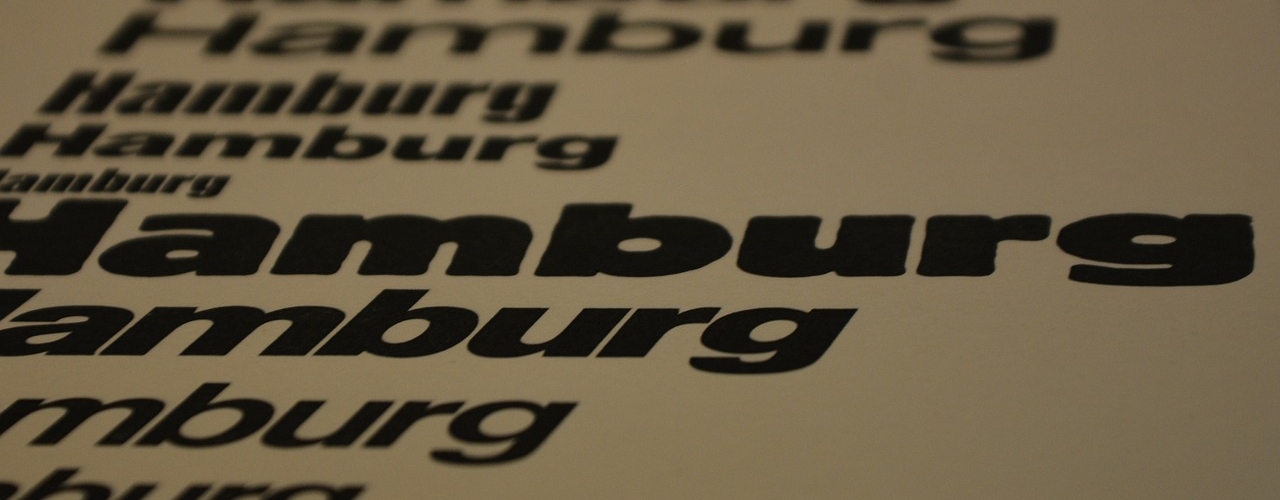Typography obviously belongs to the cohort of the fine arts, where even the smallest details and elements are meaningful and can influence the overall perception of the final creation, whether it is a picture or a text, printed with a particular typeface. In terms of fonts design, serifs are those tiny elements, which add a particular character to a typeface, contributing to the unique feel and look every font is characterized with.
By definition, serifs are the small lines or strokes at the ends of the main strokes of the letters in a particular font. Sometimes, serifs are also descriptively explained as “hooks” or “little feet” at the ends of the vertical and horizontal strokes of a letter. Consequently, fonts with serifs are usually mentioned as Serif fonts, for example, Times Roman, Garamond, Souvenir, etc. On the other hand, fonts, where letters are not supplied with such embellishing elements, are called Sans Serif fonts (“sans” means “without” in French).

It is interesting to note that along with purely decorative function serifs are believed to play a role in the text perception mechanism by the human eyes, making the printed text easier to read. This is why Serif fonts have always been among the primary choices for printing books, newspapers, and magazines. However, in electronic media, due to the specificity of perceiving a text on the computer screen, it is preferred to use Sans Serif rather than Serif fonts, because reading letters without serifs is considered to be easier on the screen.
Stemming out of the ancient Roman alphabet with the letters carved into stone, Serif fonts have passed a long way of development and evolution. As the result, now we have several types of Serif fonts, each with its own peculiarities and specific features.
Old Style Serif Fonts
Dating back to the middle of the 15th century, old style serif fonts are considered to be based on the humanist calligraphy. The key features of the old style serif fonts are low line contrast (when there is only a slight difference between thick and thin lines forming a letter) and diagonal stress (the thinnest parts of the letters are those at the angles). It is believed that the combination of diagonal stress and bracketed serifs in old style serif fonts creates a special positive word picture, which is especially favorable for the ease of reading and perception.

Free old style serif fonts





Commercial old style serif fonts





Transitional Serif Fonts
Everyone knows Times New Roman font, which is commonly used as the default font in computer text editors. This font, created in 1932, is the most vivid representative of the transitional serif fonts, which first appeared in the middle of the 18th century and now stands between old style and modern serifs in the typical font classification. Unlike old style serifs, transitional serif fonts feature higher line contrast with more distinctive difference between thick and thin lines. Transitional serif fonts are sometimes called “baroque fonts”.
Free transitional serif fonts




Commercial transitional serif fonts





Modern Serif Fonts
Modern serif fonts first appeared at the end of the 18th century. Also known as Didone serif typefaces, the family of modern serifs fonts has vivid differences from the old style serif fonts. These are the extreme high line contrast, vertical stress instead of diagonal, and long and fine serifs. Vertical lines of the modern serif fonts are usually very heavy, which, in combination with thin and light serifs, makes a text, printed in modern serif font, less readable.
Free modern serif fonts





Commercial modern serif fonts





Slab Serif Fonts
The first slab serif font was presented in the early 19th century by Vincent Figgins under the name Antique. However, in view of public craze in Europe for everything Egyptian at those times, the slab serif fonts were commonly called Egyptian. Virtually no difference between thick and thin lines of the letters is the key feature of slab serifs. With the bold and rectangular shapes, slab serif fonts often have fixed width, which means that every letter occupies the same horizontal space.
Free slab serif fonts





Commercial slab serif fonts





Clarendon Serif Fonts
Clarendon serif font is sometimes classified as the subtype of slab serif fonts. However, unlike traditional slab serifs, Clarendon font has some brackets at the junction of a stem and serifs. Also, Clarendon fonts usually feature heavy and square-cut serifs. This font group was widely used in the Old West in “wanted” posters and later on traffic signs in the USA. Now Clarendon font can be found on the logotypes of many companies with Sony among them.
Free Clarendon serif fonts




Commercial Clarendon serif fonts





Freeform Serif Fonts
Along with the serif fonts, designed in accordance with particular typography rules or tradition, such as old style serif fonts or modern serifs, there are also many freeform serif fonts, developed these days. Designers, inspired by a rich legacy of serif fonts and modern trends in typography, use all their imagination to present serif fonts in a fresh and sometimes completely unexpected way.
Free freeform serif fonts





Commercial freeform serif fonts





Banner Image by Franz P. Sauerteig from Pixabay






































































Send Comment:
48 Comments:
More than a year ago
Bodoni Antiqua?
More than a year ago
I've been a typographer for many years now and right now i'm having trouble remembering if there is a different category for Wedge Serifs of if they're just considered Serifs.
More than a year ago
I'm looking for a Bodoni style font, but not the slab version... anyone know where I can find this? It's killing me....
More than a year ago
In addition, three of those free Moderns are not at all Moderns. One is Old Style, and two are Transitional. There are lots of errors in this article.
More than a year ago
This is really great! Thanks for sharing.
More than a year ago
Excellent posting, well crafted I have to admit.
More than a year ago
great post. I've gotta do something bout my legs...
More than a year ago
Nice post thanks guys for sharing it.
More than a year ago
i feel so geek when i get excited just from reading the title xD
More than a year ago
i too agree for Jennifer
More than a year ago
This article is going to help a lot with my clients. Most of them have no idea about any of the basics of design. Letting them see this ad will make explanation much easier.
More than a year ago
I agree with the Type Professor above, in that it’s great you are exposing readers to type classification. S/he is also correct in pointing out that Baskerville is most certainly Transitional; in fact, Baskerville is the archetypal Transitional typeface. There are quite a few others that are wrongly classified, but ... I’ll keep my mouth shut, and just congratulate you for spreading the word.
See also this article for an explanation of the Transitional classification:
More than a year ago
Thanks for the well written and very useful article.
More than a year ago
Thank you! It was driving me nuts that Baskerville was listed as a Modern typeface. That type classification page you linked to is much clearer than a lot of the examples here.
More than a year ago
You are so fake.. Like all the other comments on this site are just adds.
More than a year ago
I don't know if there's so many type of serif fonts out there. All I thought was that Times New Roman, Garamond, Goudy, etc are serifs, without any further classification. Thanks Noupe
More than a year ago
Museo is indeed perfect!
go serif!
More than a year ago
Great article with some beautiful examples of serif typography. We use Sentinel for our corporate font by which is a great option for our corporate/relaxed vibe.
More than a year ago
Sorry, but Kevin is correct.
More than a year ago
Baskerville is the model for transitional classification. Kevin is correct.
More than a year ago
Great collection! I'm a serif girl, and I really love Museo. It's just perfect.
More than a year ago
Kevin,
You're wrong. Baskerville is Modern serif. Gotta check all characters. If you check M or N, you'll see yourself.
More than a year ago
thanks for putting this together. good read.
More than a year ago
Thanks for the well written and very useful article.
More than a year ago
spam